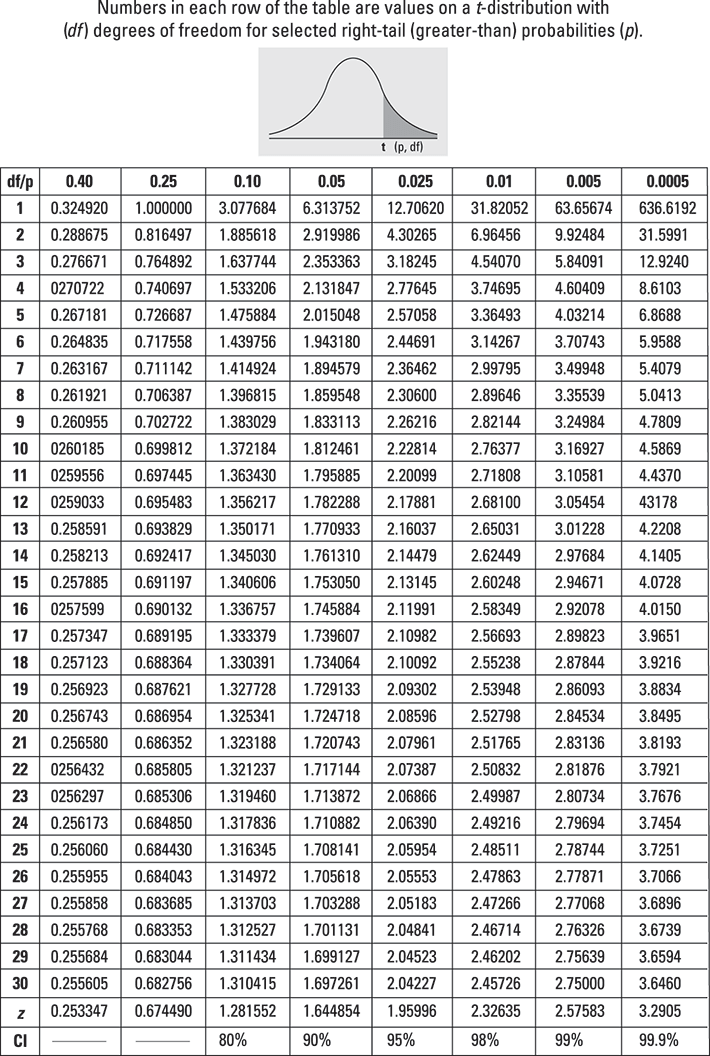What Is The Value Of The T Score For A 99.8% Confidence Interval If We Take A Sample Of Size 15?
When the sample size is big (at least 30), or you know its standard deviation, you typically use disquisitional values on the Z-distribution to build the margin of error. When the sample size is small (less than 30) and/or the population standard divergence is unknown, you use the t-distribution to observe critical values. (At roughly 25 or 30 degrees of freedom, the values of the t-distribution begin to match those of the Z-distribution. So, a sample size of 30 is non an must-have requirement, only it'll piece of work well in many situations.)

To assist you lot find disquisitional values for the t-distribution, y'all tin use the final row of the t-table, which lists mutual confidence levels, such as 80%, 90%, and 95%. To find a critical value, look up your confidence level in the lesser row of the table; this tells you lot which cavalcade of the t-tabular array yous need. Intersect this column with the row for your df (degrees of freedom). The number you run across is the critical value (or the t-value) for your confidence interval. For example, if you lot want a t-value for a 90% confidence interval when y'all have 9 degrees of freedom, go to the bottom of the table, find the column for xc%, and intersect it with the row for df = 9. This gives you a t -value of one.833 (rounded).
Across the superlative row of the t-table, you see right-tail probabilities for the t-distribution. But confidence intervals involve both left- and right-tail probabilities (because y'all add and subtract the margin of error). Then half of the probability left from the confidence interval goes into each tail. You lot demand to have that into business relationship. For case, a t-value for a xc% confidence interval has v% for its greater-than probability and five% for its less-than probability (taking 100% minus ninety% and dividing by 2). Using the height row of the t-table, you would have to look for 0.05 (rather than x%, equally yous might exist inclined to do.) But using the bottom row of the table, you only look for 90%. (The effect you get using either method ends up being in the same column.)
When looking for t-values for confidence intervals, use the lesser row of the t-table every bit your guide, rather than the headings at the meridian of the table.
Near This Commodity
This article can exist found in the category:
- Statistics ,
What Is The Value Of The T Score For A 99.8% Confidence Interval If We Take A Sample Of Size 15?,
Source: https://www.dummies.com/article/academics-the-arts/math/statistics/how-to-find-t-values-for-confidence-intervals-169841/
Posted by: kennedyenone1944.blogspot.com


0 Response to "What Is The Value Of The T Score For A 99.8% Confidence Interval If We Take A Sample Of Size 15?"
Post a Comment